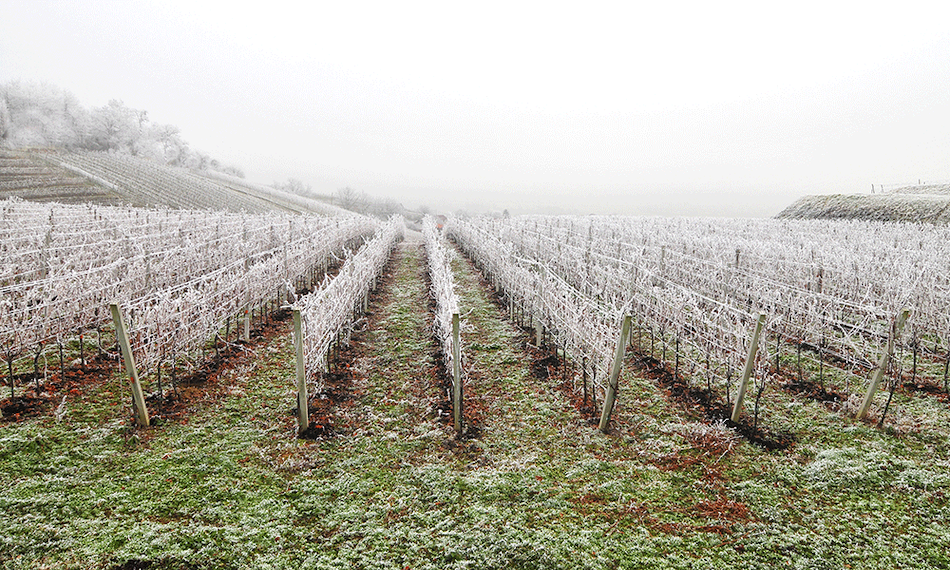Frost seeding is a great option for improving existing pastures or waterways.
“We’re only four to five weeks away from frost seeding time,” said Laura Lant, agronomist for Midwest Grass & Forage. “Frost seeding can be done without tearing up pastures with tillage.”
During late winter farmers can broadcast species like clover or grass over pastures to thicken the stand and improve production.
“It is an effective way to increase the pasture whether you want to keep it in pasture for the three to four years or you just need it to tie you by for a few months or until fall,” the agronomist said during a presentation at the Northwest Illinois Agronomy Summit, hosted by University of Illinois Extension.
Some forage species work better than others for frost seeding.
“Clovers are the most common and probably the most economical,” Lant said.
“Adding a legume will produce nitrogen, so that is very beneficial for yields and fertility of any grasses out there,” she said. “If you need something for one year, consider annual ryegrass, Italian ryegrass, Frosty clover or some of the red clovers.”
After the 2019 growing season, where many farmers planted forages on prevent plant acres or for emergency hay needs, Lant said there may be limited supplies of some seeds.
“Make sure you’re planning ahead for those sooner rather than later,” she said.
With little snow cover this year, Lant said, farmers have an opportunity to do some scouting of their pastures and hay fields.
“If you were questioning some hay fields last year, do some scouting and then revise your plan of what you’re going to need this year,” she said.
“Knowing that hay prices have gotten high at auctions, in central Illinois we’ve got some guys who aren’t livestock producers who plan to put in a hay field or two to capitalize on that market.”
Lant encourages farmers to plant improved genetics when reseeding or renovating pastures.
“All too often I see guys go cheap and skimp on pastures species,” she said. “They’re using products like Kentucky 31 that were developed in the 1930s and ‘40s and I don’t think anyone here would plant a corn hybrid or soybean variety from 2010 let alone something 50 or 60 years old.”
A lot of innovations have occurred in forage seed production.
“You may have to spend $10 to $15 more per acre, but see if that makes sense for your operation” Lant said.
“Along with improving your systems and higher yield, you may find things like red clover with less hair that’s going to dry down quicker for dry hay or you may find a fescue that has a soft leaf and more palatable,” she said.
There are options for livestock producers who think they may be short on feed early in the spring.
“Fortunately, we’ve been able to have cows on stalks in a lot of places to help prevent this,” Lant said. “If you did get cover crops in, grazing Triticale, cereal rye or annual ryegrass in the spring is a great option to keep feed costs down.”
Another option is to plant something in late February to early March like a forage oat or forage pea.
“That can be accomplished for $25 to $30 per acre and can really help to tie you over until you get to the summer annuals,” Lant said.
“Last year, we sold a lot of summer annuals to folks who had never tried them before because of prevent plant and that really depleted the seed supply,” she said. “Teff seed produced in 2019 was planted in 2019, so there will be some seed shortages this year.”
Therefore, Lant said, it is important for farmers to plan ahead and work with their seed suppliers early.
“It’s not a desperate situation, but you need to make sure you’re focusing ahead this year more than normal,” Lant said.
“If you have livestock and have never tried summer annuals, we encourage you to pick one and try it,” she said. “Teff grass is great quality and great for a beginner because you don’t have livestock health issues with prussic acid like some of the other summer annuals.”
However, Teff grass can be a challenge to get established.
“You need to drill it about one-eighth of an inch deep, so if you have the equipment, it is a great option for high quality dry hay,” Lant said.
Sorghum-sudan, forage sorghum, sudangrass and millets are good options, Lant said, because they produce high tonnage and high quality forage that is very cost effective to produce.
“The downside for the sorghum-sudan family is they have a risk for prussic acid poisoning,” she said. “To avoid that, be sure you’re cutting above 12 inches, or after a frost, wait seven days before turning livestock out.”





Post a comment
Report Abusive Comment